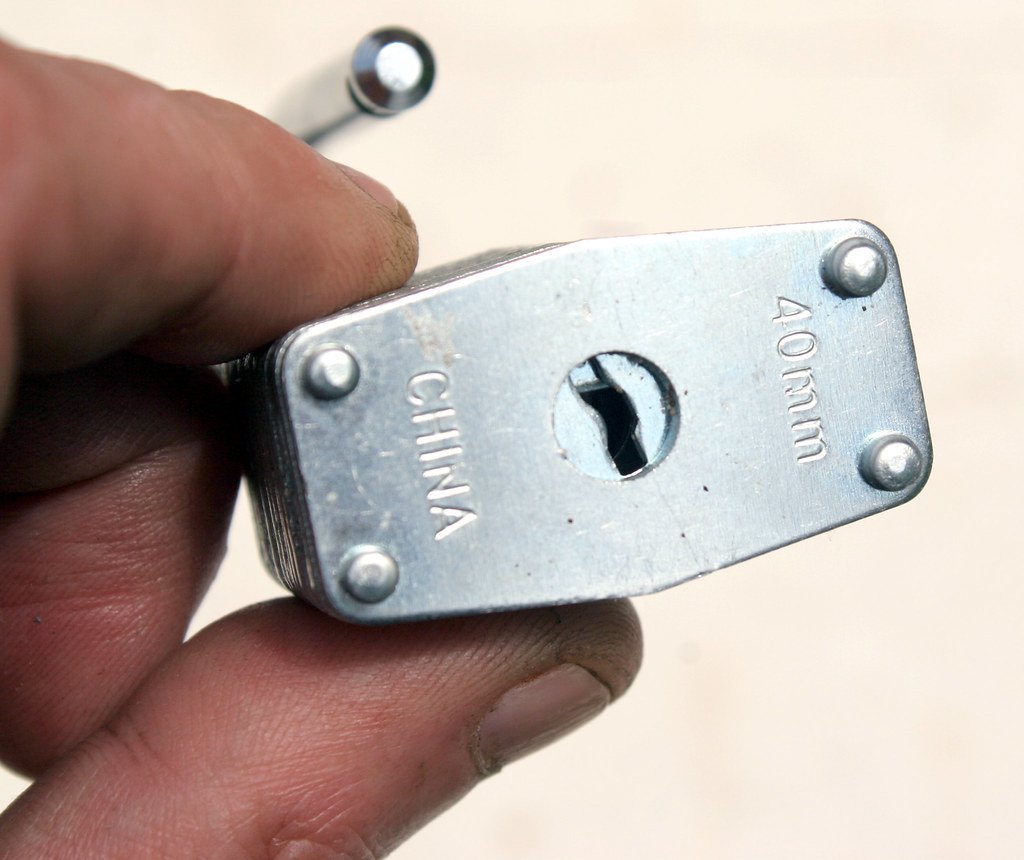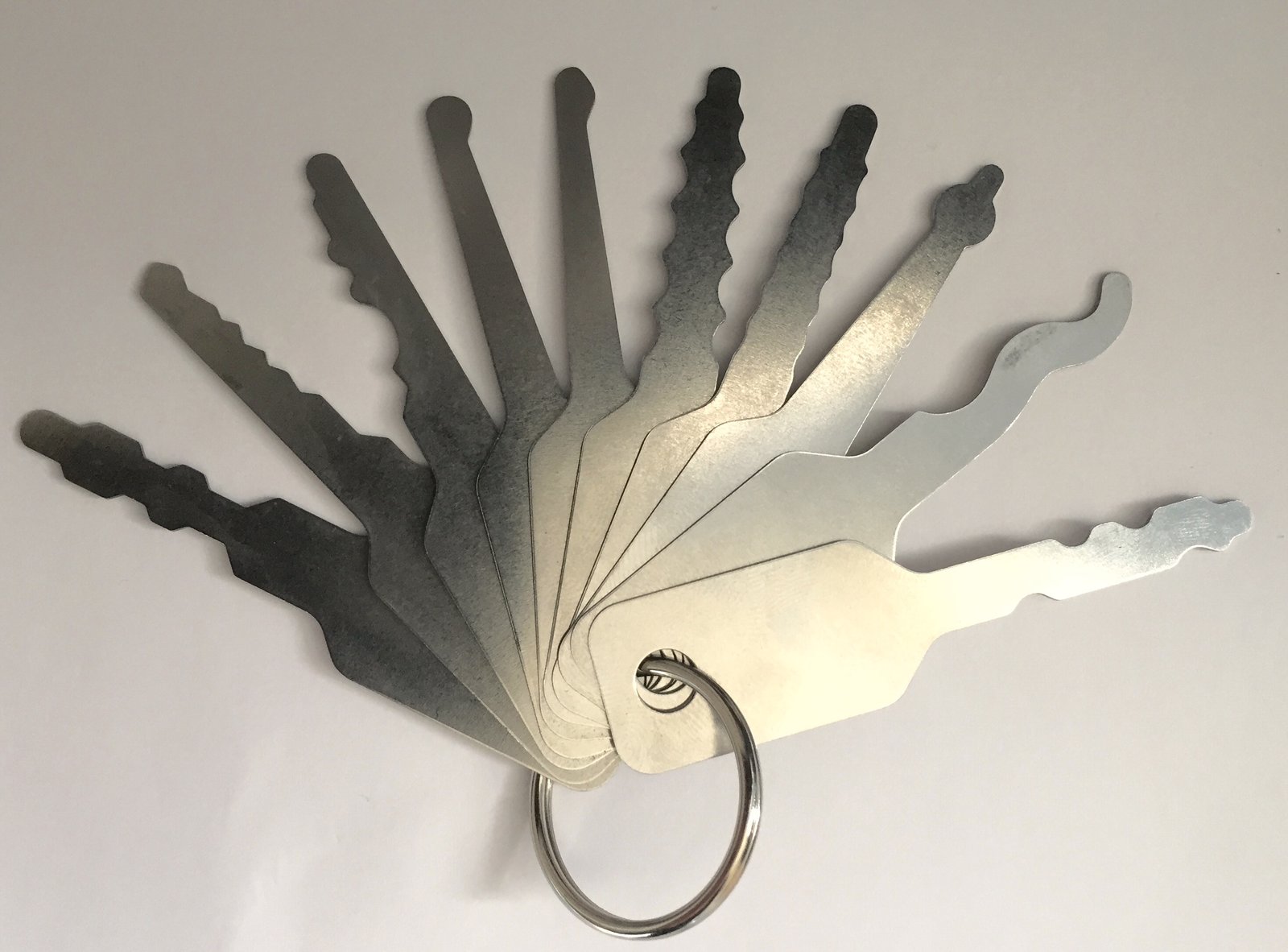Imagine a world where locks are not just mechanisms tasked with keeping our belongings secure, but intricate puzzles that baffle even the cleverest of minds. In this realm, a wafer lock reigns as a true enigma, an unsolved mystery draped in metal and mystery. With its complex design and mysterious inner workings, understanding the mechanics of a wafer lock is akin to peering into the depths of a labyrinthine maze. Fear not, intrepid reader, for we shall embark on a journey together into the realm of these enigmatic locks, uncovering the secrets behind their operation, their vulnerabilities, and the delicate balance they strike between security and accessibility. Let us unlock the wonders of a wafer lock and embrace the intrigue that lies within.
Table of Contents
- Understanding Wafer Locks: The Inner Mechanism Revealed
- Key Components of a Wafer Lock and Their Functions
- Uncovering the Key Principles behind Wafer Lock Picking
- Tips and Techniques for Effectively Opening a Wafer Lock
- Choosing the Right Tools for Successful Wafer Lock Manipulation
- Q&A
- In Conclusion

Understanding Wafer Locks: The Inner Mechanism Revealed
Unlocking the Secrets of Wafer Locks
Wafer locks are one of the most common types of locks found in everyday objects, from filing cabinets to automobile ignitions. Understanding the inner mechanism of wafer locks can shed light on how they work and even increase your lock- picking skills. Let’s delve into the intricate world of wafer locks, and reveal the secrets they hold.
At its core, a wafer lock consists of a series of individual wafers stacked vertically within the lock cylinder. Each wafer is a flat, rectangular piece that contains a keyway cutout. When the correct key is inserted into the lock, the ridges along the key align perfectly with the notches within each wafer, allowing them to reach the correct height within the cylinder. This alignment creates a shear line, enabling the key to turn smoothly and unlock the mechanism.
Understanding how wafer locks operate can be further dissected as follows:
- Wafers: The number of wafers can vary depending on the complexity of the lock. Each wafer has notches cut into specific positions, aligning with the ridges on the key. This creates a combination unique to that lock and key pair.
- Spring Load: The pressure provided by small springs keeps the wafers against the key when inserted.
- Shear Line: When the notches on the wafers are perfectly aligned with the ridges on the key, the shear line is formed, enabling the cylinder to turn and the lock to open.
While wafer locks may seem simple in design, the precision and complexity of their inner mechanism reveals a fascinating interplay of components. Understanding how these locks function empowers locksmiths and enthusiasts alike to manipulate them effectively and develop better security solutions.

Key Components of a Wafer Lock and Their Functions
In a wafer lock, various components work together to ensure proper functioning and security. Understanding these key components and their functions is essential for locksmiths, security professionals, and anyone interested in the mechanics of locks.
1. Wafer Tumblers: These small, thin discs are the heart of a wafer lock. They contain irregular cuts and notches that correspond with a specific key pattern. Wafer tumblers are responsible for allowing or blocking the rotation of the lock cylinder, providing security by creating unique combinations that only the correct key can match.
2. Springs: Springs play a vital role in a wafer lock by maintaining proper tension and pressure on the wafer tumblers. When a key is inserted, the springs push the wafer tumblers up, aligning them with the shear line and allowing the cylinder to rotate freely.
3. Plug: The plug is the part of the lock cylinder that rotates when the correct key is inserted. It is connected to the keyway and holds the wafer tumblers in place. As the plug rotates, it activates the lock mechanism, such as sliding bolts or latch mechanisms. The plug requires precise alignment with the wafers to ensure a smooth and efficient operation.
4. Retaining Pins: These small pins are responsible for keeping the wafer tumblers in place within the lock cylinder. They ensure that the wafers remain aligned with the correct key pattern and prevent them from becoming misaligned or dislodged during lock operation.
In conclusion, a wafer lock consists of several key components, each serving a crucial function in maintaining the lock’s security and functionality. From wafer tumblers that create unique combinations to springs that provide tension, and the plug that rotates to activate the lock mechanism – all components work together to ensure a secure and reliable locking system.

Uncovering the Key Principles behind Wafer Lock Picking
When it comes to lock picking, one technique that stands out is wafer lock picking. This method involves manipulating the wafers inside the lock mechanism to gain access. The wafer lock, also known as the disc-detainer lock, consists of a series of interconnected discs or wafers, which must align perfectly to unlock the mechanism.
Principle 1: Understanding the anatomy of a wafer lock is crucial. Each wafer is a circular metal disc with a notch or groove on one side. When the lock is in the locked position, the notches on the wafers align, preventing the lock from turning. To open the lock, the notches need to be rotated to create a gap, allowing the lock to turn freely.
Principle 2: Utilizing the right tools and techniques is essential when picking wafer locks. Thin, flat tools such as wafer picks or rake picks are commonly used. These tools are designed to lift and maneuver the wafers individually. Raking the picks across the wafers can simulate the rotation needed to create the gap and unlock the mechanism.
Principle 3: Patience and practice are key in becoming proficient at wafer lock picking. It requires finesse and precision to manipulate each wafer without disturbing the others. Developing a sense of touch and understanding the feedback from the wafer movement are crucial skills to master.
- Take your time and apply gentle pressure to avoid breaking the delicate wafers.
- Use a “raking” technique to speed up the process, but don’t overlook the option of single-wafer manipulation for greater accuracy.
- Experiment with different tools and tensioning techniques to find the approach that works best for you.
Uncovering the principles behind wafer lock picking opens up a world of possibilities for those interested in locksmithing or simply exploring the art of lock picking. With practice and a solid understanding of these principles, you can boost your locksmithing skills and gain access to wafer locks with confidence.
Tips and Techniques for Effectively Opening a Wafer Lock
Unlocking a wafer lock requires expertise, precision, and the right tools. Whether you’re a locksmith or an enthusiast looking to expand your lock-picking skills, here are some insider tips and techniques to help you conquer the challenge.
- Understand the anatomy: Start by familiarizing yourself with the wafer lock’s anatomy. Study its components, including the wafers, driver pins, springs, and plug. This knowledge will give you a better understanding of how the lock operates, allowing you to manipulate it more effectively.
- Use tension correctly: Apply tension to the plug using a tension wrench. Remember to exert consistent pressure while keeping the tension slight. Avoid excessive force that may lead to overbinding the wafers and hindering your progress.
- Apply the rake technique: Raking is a popular technique for opening wafer locks. Using a rake pick or a broken key, insert it into the lock and rapidly move it in and out while applying tension. This motion causes the wafers to bounce and eventually align with the plug, allowing it to rotate.
Remember, practice makes perfect in the world of lock picking. Regularly challenge yourself with various wafer lock models to enhance your skills and techniques. Additionally, keep in mind the ethical considerations and laws surrounding lock picking in your area.
Choosing the Right Tools for Successful Wafer Lock Manipulation
When it comes to wafer lock manipulation, having the right tools is crucial for achieving success. Each lock presents its own unique challenges, but with the correct selection of tools, you can significantly increase your chances of a smooth and effective manipulation process.
Here are some essential tools that you should consider when tackling wafer locks:
- Wafer Picks: These specialized picks have a thin, curved end designed to fit into the narrow grooves of a wafer lock. They allow you to individually lift and manipulate the wafers, making it easier to set them in the correct position.
- Tension Wrenches: As with any lock manipulation technique, a tension wrench is a must-have tool. It provides the necessary pressure to keep the lock in the correct position while you work on manipulating the wafers.
- Decoding Tools: Wafer locks can sometimes be complex, and decoding tools can help you analyze the lock’s internal components and better understand its unique characteristics. This knowledge can inform your manipulation strategy, giving you an edge in successful manipulation.
Remember, the right tools alone won’t guarantee success. It’s essential to develop your skills through practice and experimentation. Each tool requires precision and finesse, so take your time to familiarize yourself with their functionality. With practice and the right tools at your disposal, you’ll be well on your way to mastering wafer lock manipulation.
Q&A
How does a wafer lock work?
A wafer lock consists of multiple wafer tumblers placed evenly along the lock cylinder. When the correct key is inserted, the wafer tumblers align perfectly, allowing the lock cylinder to rotate and open. Incorrectly cut keys may result in misalignment and prevent the lock from turning.
What are wafer tumblers?
Wafer tumblers are flat, thin metal plates stacked on top of each other inside the lock cylinder. Each tumbler has a notch that moves up and down, aligning with the other tumblers when the correct key is inserted.
Are wafer locks secure?
While wafer locks provide a basic level of security, they are generally considered less secure compared to more complex lock designs. The simplicity of wafer locks makes them vulnerable to picking techniques, and they are often found in low-security applications such as cabinets and desk drawers.
Can wafer locks be picked?
Yes, wafer locks can be picked using various techniques, such as using a wafer pick or a tension wrench. Since the tumblers are thinner and less complex compared to other lock types, picking wafer locks can be relatively easier for experienced locksmiths or individuals with the right tools.
What happens if a wafer tumbler gets stuck?
If a wafer tumbler gets stuck or is not properly aligned, it may prevent the lock cylinder from rotating and consequently lock or unlock the wafer lock. In such cases, manipulating the stuck tumbler or properly inserting the key may resolve the issue. If all else fails, calling a locksmith might be necessary.
How can I maintain a wafer lock?
To maintain a wafer lock, it is important to keep it clean and free of debris. Lubricating the lock with a graphite-based or silicone-based lubricant can help maintain smooth operation. Avoid using oil-based lubricants as they attract dust and can cause the lock to become sluggish over time.
In Conclusion
As we peel back the layers of knowledge surrounding wafer locks, it becomes evident that these unassuming little contraptions hold an intriguing world of mechanisms and secrets. From their humble beginnings, wafer locks have evolved into formidable guardians of our treasures, standing proudly against the incessant tides of mischief and deception.
While our journey through the inner workings of wafer locks may have concluded, the solutions they provide continue to shape our lives in countless ways. We now understand the delicate dance of wafers sliding effortlessly into their perfectly coordinated slots, maintaining an intricate harmony that keeps our valuables secure. We have glimpsed the synergy between levers and springs, witnessing their orchestrated symphony, allowing only the rightful key to unlock the door to endless possibilities.
As we bid farewell to this exploration of wafer locks, let us embrace the exhilaration and awe that comes when we truly comprehend the beauty and complexity of everyday objects. These seemingly ordinary mechanisms silently perform their duty, silently ensuring our safety and offering a small glimpse into the brilliance of human ingenuity.
Let this newfound knowledge serve as a reminder that even in the mundane, true artistry resides. So the next time you find yourself turning a key in a wafer lock, take a moment to appreciate the quiet mastery that lies just beneath the surface. For within the bows and bends of those tiny wafers and pins, we find an unwavering testament to mankind’s unwavering pursuit of security, one delicate click at a time.
Farewell, dear reader, as we leave the realm of wafer locks behind. May this newfound understanding of their inner workings ignite a curiosity that propels you on a lifelong quest for knowledge, unraveling the enigmatic beauty of the world that surrounds us. And perhaps, in doing so, you will uncover the secrets that lie in other hidden wonders, waiting patiently to be explored.
As an affiliate, my content may feature links to products I personally use and recommend. By taking action, like subscribing or making a purchase, you’ll be supporting my work and fueling my taco cravings at the same time. Win-win, right?
Want to read more? Check out our Affiliate Disclosure page.